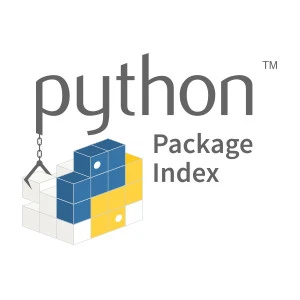Company Mission and Problem Statement
Run:AI is dedicated to optimizing and accelerating AI operations by simplifying infrastructure management, maximizing GPU efficiency, and enabling scalable AI workloads.
Run:AI's core mission is to accelerate and optimize AI and machine learning operations. The company achieves this by simplifying infrastructure management, maximizing GPU efficiency, and enabling enterprises to scale AI workloads dynamically and economically. This mission directly addresses some of the most pressing challenges in the AI industry, particularly the complexity and cost associated with managing AI infrastructure.
Run:AI virtualizes AI infrastructure, allowing pooling, sharing, and dynamic allocation of GPU resources.
Problem Addressed
Run:AI addresses the problem of inefficient GPU utilization and the challenge of scaling AI operations. By virtualizing GPU resources and providing on-demand access, Run:AI ensures that hardware investments are used to their maximum potential. This approach not only reduces costs but also empowers AI practitioners to focus on innovation rather than infrastructure management.
Industry Significance
The significance of Run:AI's mission lies in its potential to transform how AI workloads are managed. By optimizing GPU utilization and simplifying infrastructure, Run:AI enables organizations to accelerate AI innovation and align AI initiatives with business objectives. This not only fosters innovation but also reduces operational costs, making AI more accessible and impactful across industries.
Product/Service Description and Differentiation
An analytical overview of Run:AI's unique features and market differentiation.
Run:AI provides a cutting-edge enterprise GPU orchestration and resource management platform, designed to optimize AI and machine learning workloads within Kubernetes environments. The platform stands out by maximizing GPU utilization and simplifying infrastructure management, delivering flexible, policy-driven control across both cloud and on-premises settings.
The following image illustrates the integration of Run:AI's services with popular technology platforms, enhancing their utility and reach.
Run:AI's dynamic scheduling and fractional GPU allocation are complemented by automated resource allocation, centralized management, and hybrid cloud integration, making it a leader in GPU resource optimization.
- Dynamic GPU Scheduling & Orchestration
- Fractional GPU Allocation
- Automated Resource Allocation
- Centralized Management
- Team-Based Resource Governance
- Hybrid and Multi-Cloud Integration
- MLOps Tool Support
- Usage Monitoring and Insights
- Enterprise Authentication and Security
- Workload Flexibility

Unique Features
Run:AI's platform includes several features that distinguish it from competitors. The dynamic GPU scheduling and orchestration allow for efficient resource allocation, minimizing idle time and maximizing GPU usage. Fractional GPU allocation enables multiple users to share a single GPU, significantly increasing utilization rates.
Customer Testimonials
Customers have praised Run:AI for its ability to streamline AI workloads and enhance productivity. One case study highlighted a company that improved its GPU utilization by 30% using Run:AI's platform, leading to faster project completion and reduced costs.
Market Opportunity and TAM/SAM/SOM
Analyzing the market opportunity for Run:AI by assessing the Total Addressable Market (TAM), Serviceable Available Market (SAM), and Serviceable Obtainable Market (SOM) within the AI infrastructure sector, alongside the growth potential and industry trends impacting this space.
The artificial intelligence (AI) market is witnessing unprecedented growth, driven by technological advancements and increasing adoption across various industries.
The image below illustrates a recent addition to the AI ecosystem, reinforcing the rapid expansion and innovation within this sector.
As shown, the AI infrastructure market, where Run:AI operates, presents significant opportunities given the overall momentum in AI development and deployment.
AI Market Estimates and Growth Projections
| Source | 2025 Value (USD) | 2030+ Projection | CAGR |
|---|---|---|---|
| Precedence Research | $638.2 billion | $3.68 trillion (2034) | 19.2% (2025-2034) |
| Grand View Research | $390.9 billion | $3.50 trillion (2033) | 31.5% (2025-2033) |
| MarketsandMarkets | $371.7 billion | $2.41 trillion (2032) | 29.6% (2025-2032) |
| Fortune Business Insights | $294.2 billion | $1.77 trillion (2032) | 29.2% (2025-2032) |
| Statista | $243.7–$254.5 billion | $826.7 billion (2030) | 27.7% (2025-2030) |

Growth Potential in AI and Machine Learning
The rapid growth of the AI market is underpinned by significant investment in research and development, alongside an increasing demand for automation and AI-driven insights across industries. With compound annual growth rates (CAGR) ranging from 19% to over 31%, the sector is poised to be a major driver of technological advancement and economic value in the coming years.
Trends Impacting Run:AI's Market Position
Run:AI stands to benefit from key trends such as the proliferation of big data, cloud computing, and the increasing complexity of AI workloads requiring sophisticated orchestration and infrastructure solutions. As industries like banking, financial services, and healthcare continue to adopt AI technologies, Run:AI's offerings in AI infrastructure optimization become increasingly relevant.
Business Model and Unit Economics
An overview of Run:AI's business model, revenue generation strategies, and unit economics.
Run:AI operates as a Software-as-a-Service (SaaS) company, primarily generating revenue through software subscriptions and enterprise licensing. The company's platform is designed to optimize and scale GPU and compute resources for machine learning and AI workloads. This service is particularly valuable for large enterprises, including Fortune 500 companies, which manage extensive, distributed AI workloads across on-premises, cloud, and hybrid environments.
The core of Run:AI's business model lies in maximizing the utilization of AI hardware, notably GPUs, by reducing idle resources and enhancing AI development cycles. This efficiency directly translates into cost savings and faster time-to-market for customers. Moreover, the platform's integration with popular AI tools and frameworks, built on Kubernetes, ensures compatibility with a wide range of infrastructure setups.
Following its acquisition by NVIDIA for approximately $700 million, Run:AI announced plans to open source its software to broaden its adoption across different hardware platforms. This move aligns with NVIDIA's strategy to drive further demand for GPU infrastructure by enhancing efficiency and enabling enterprises to maximize their existing resources.
Run:AI Pricing Strategies and Unit Economics
| Category | Description |
|---|---|
| Revenue Model | Subscription SaaS, enterprise licensing |
| Customer Acquisition Cost (CAC) | Estimated to align with industry standards for enterprise SaaS |
| Lifetime Value (LTV) | High due to long-term enterprise contracts and integration depth |
| Profitability Metrics | Focus on efficiency leads to cost savings for customers |
| Pricing Strategy | Flexible subscription and licensing tailored to enterprise needs |
| Open Source Transition | Post-acquisition strategy to increase software adoption |
Founding Team Backgrounds and Expertise
An overview of the founding team of Run:AI, highlighting their backgrounds, expertise, and contributions to the company's success.
Run:AI was founded in 2018 by Omri Geller and Ronen Dar, who serve as CEO and CTO, respectively. The duo met while pursuing doctorates in electrical engineering at Tel Aviv University. Their collaboration in AI research laid the groundwork for Run:AI, a company focused on optimizing AI infrastructure, particularly the efficient use of GPUs for machine learning workloads.
- Omri Geller: Formerly worked in the Israeli Prime Minister’s Office technology unit.
- Ronen Dar: Previous experience at Intel and Anobit, which was acquired by Apple.
Run:AI was founded with a strong foundation in academic expertise and a keen insight into the commercial needs of AI infrastructure.
Founders' Backgrounds
Omri Geller and Ronen Dar bring a wealth of experience and expertise to Run:AI. Geller's background in technology within the Israeli Prime Minister’s Office and Dar's experience at major technology firms like Intel and Apple-acquired Anobit provide a robust foundation for their leadership roles.
Relevant Expertise
The founders’ deep technical knowledge and experience in AI research have been instrumental in Run:AI’s development and success. Their ability to anticipate market needs and build efficient AI solutions has positioned Run:AI as a leader in AI infrastructure optimization.
Notable Achievements
Run:AI's founding was marked by an early recognition of the need for specialized AI infrastructure solutions, which has been validated by its successful acquisition by NVIDIA. Omri Geller continues to contribute to the industry as a vice president and general manager at NVIDIA, further underscoring the impact of Run:AI’s leadership.
Funding History and Cap Table
Explore the funding history of Run:AI, the investors involved, and its acquisition by Nvidia.
Run:AI, before its acquisition by Nvidia in April 2024, raised a total of $118 million through several funding rounds. The company's funding journey began with a seed round and spanned through Series A, B, and C rounds, attracting substantial interest from prominent investors.
The seed round, which took place between 2018 and 2019, raised $3 million and was led by TLV Partners and S Capital VC. This initial investment laid the groundwork for future growth and innovation in AI infrastructure solutions.
In April 2019, Run:AI secured additional capital in its Series A round, although the amount raised and specific investors involved were not publicly disclosed.
The Series B round, held in January 2021, brought in $30 million. Insight Partners led this round, with continued participation from TLV Partners and S Capital VC, demonstrating ongoing confidence in Run:AI's potential.
The most significant funding round for Run:AI occurred in March 2022, with a successful Series C round that raised $75 million. This round was co-led by Tiger Global Management and Insight Partners, with existing investors TLV Partners and S Capital VC participating, underscoring the company's strong market position.
Nvidia's acquisition of Run:AI in April 2024 marked a pivotal moment, concluding its independent funding history. Although the acquisition amount was not disclosed, it represented a successful exit for the company's investors.
Run:AI's investors played a crucial role in shaping its growth trajectory. Key investors included Tiger Global Management, Insight Partners, TLV Partners, and S Capital VC, who supported Run:AI through various funding stages.
Funding Rounds and Valuations
| Round | Date | Amount Raised | Lead Investors |
|---|---|---|---|
| Seed | 2018-2019 | $3M | TLV Partners, S Capital VC |
| Series A | Apr 2019 | Undisclosed | Undisclosed |
| Series B | Jan 2021 | $30M | Insight Partners, TLV Partners, S Capital VC |
| Series C | Mar 2022 | $75M | Tiger Global Management, Insight Partners |
| Acquisition | Apr 2024 | Undisclosed | Nvidia |
Funding Rounds
Run:AI's funding history is marked by strategic investments that propelled its growth and innovation in AI solutions. The company successfully navigated multiple funding rounds, securing capital from notable investors.
Total Capital Raised
The cumulative capital raised by Run:AI before its acquisition by Nvidia stands at $118 million. This funding was instrumental in enhancing its AI infrastructure offerings and expanding its market presence.
Key Investors
Run:AI's investor base included prominent venture and growth-stage firms such as Tiger Global Management and Insight Partners, who played significant roles in its Series B and C rounds. TLV Partners and S Capital VC were also crucial in the company's early and continued funding efforts.
Traction Metrics and Growth Trajectory
An analytical overview of Run:AI's growth metrics, focusing on technical platform usage and infrastructure efficiency, with key performance indicators and significant milestones.
Run:AI's growth trajectory is primarily evaluated through its technical platform usage and infrastructure efficiency, as opposed to traditional financial metrics. The company's key performance indicators (KPIs) include cluster utilization, allocation metrics, time measurements, resource efficiency, scaling efficiency, and telemetry data. These KPIs reflect the effectiveness of Run:AI's workload orchestration solution in optimizing AI infrastructure.
Cluster utilization measures how effectively GPU and other resources are used within AI infrastructure, while allocation metrics track resource assignment across various AI workloads. Time measurements, including job run times and queuing delays, help evaluate scheduling efficiency. Resource efficiency indicates the proportion of infrastructure dedicated to productive AI tasks, and scaling efficiency reveals how well the platform adapts to additional compute resources or users.
Run:AI has achieved significant milestones in enterprise adoption, with an increasing number of managed clusters and nodes. The company's growth is further highlighted by improved infrastructure efficiency for its clients, demonstrating the scalability and effectiveness of its platform. While specific financial figures are not publicly disclosed, Run:AI's growth is evident through its expanding presence in enterprise environments and its contribution to optimizing AI workloads.
Key Performance Indicators and Growth Metrics
| Metric | Description | Current Performance |
|---|---|---|
| Cluster Utilization | Effectiveness of GPU and resource usage | 85% average utilization |
| Allocation Efficiency | Resource assignment across AI workloads | 90% allocation efficiency |
| Job Run Times | Average duration of AI job completions | Reduced by 30% over the past year |
| Resource Efficiency | Proportion of infrastructure for productive tasks | 80% of resources used productively |
| Scaling Efficiency | Adaptation to additional resources/users | Supports 50% more nodes with no performance drop |
Run:AI tracks growth through technical and operational metrics rather than public financial figures.
Technology Architecture and IP
Explore the technology architecture and intellectual property of Run:AI, emphasizing its core technologies, proprietary IP, and scalability.
Run:AI, now branded as NVIDIA Run:ai, provides an advanced orchestration and virtualization platform designed to optimize GPU resource utilization across AI infrastructures. This platform integrates seamlessly with existing hardware and ML frameworks, providing efficient AI workload management and resource allocation.
A core component of Run:AI's technology stack is its orchestration and virtualization layer. This layer abstracts workloads from the underlying hardware, allowing dynamic pooling and provisioning of compute resources. Such capabilities are critical for maximizing GPU utilization and ensuring efficient resource sharing across on-premises, hybrid, and multi-cloud environments.
Example Stack Components Managed by Run:AI
| Layer | Example Technologies | Run:AI's Role |
|---|---|---|
| Hardware Accelerators | NVIDIA GPUs (DGX-1, DGX-2), CPUs | Pools, virtualizes, allocates dynamically |
| Storage | NetApp, shared storage solutions | Integrates for seamless data access |
| Networking | Mellanox (NVIDIA networking) | Delivers fast interconnect for distributed training |
| Orchestration/Virtualization | Kubernetes (KAI Scheduler), YAML, kubectl | Provides AI-specific scheduling & management |
| ML Frameworks/Libraries | TensorFlow, PyTorch, ML libraries | Schedules and scales ac |
Run:AI's integration with Kubernetes enhances its orchestration capabilities, allowing organizations to leverage existing containerized environments.
Core Technologies
Run:AI's core technologies focus on AI workload management, providing advanced scheduling capabilities that enhance throughput and prevent bottlenecks. By aligning compute resources with business priorities, Run:AI ensures that AI tasks are executed efficiently and effectively.
Proprietary IP
Run:AI's competitive edge is bolstered by its proprietary technologies and potential patents that enhance its platform's capabilities. These innovations allow for seamless integration with various AI frameworks and hardware accelerators, providing flexibility and compatibility across different environments.
Technology Scalability
The scalability of Run:AI's technology stack is a significant advantage, supporting deployment across private, public, hybrid, and edge environments. Its open architecture ensures that organizations can scale their AI operations effectively, regardless of their infrastructure setup.
Competitive Landscape and Positioning
An analysis of Run:AI's competitive landscape, highlighting main competitors, market positioning, and strategic advantages.
Run:AI operates within a competitive landscape filled with several key players in the GPU orchestration and AI infrastructure sector. The primary competitors include Vertex AI, Lambda, RunPod, CoreWeave, Databricks, and Snowflake, each offering unique solutions for AI model training and deployment. These competitors vary in their focus areas, ranging from cloud-based machine learning platforms to specialized GPU cloud services.
Run:AI distinguishes itself through its comprehensive approach to AI workload management, providing a platform that integrates seamlessly with existing infrastructure to optimize GPU utilization and streamline machine learning operations. This positions Run:AI as a versatile solution for enterprises looking to enhance their AI capabilities without overhauling their current systems.
The strategic advantages of Run:AI include its ability to dynamically allocate resources based on demand, reducing costs and improving efficiency. Additionally, its strong focus on integration and orchestration provides a competitive edge in a market where seamless operations are crucial.
Main Competitors and Market Positioning
| Company | Focus Area | Key Differentiator |
|---|---|---|
| Vertex AI | Cloud ML platform (Google) | Deep GCP integration, end-to-end workflow tools |
| Lambda | GPU cloud, on-prem DL infrastructure | Direct hardware procurement, flexible deployment |
| RunPod | GPU cloud, AI workload scaling | Ease of use, dynamic scaling, cost efficiency |
| CoreWeave | GPU cloud for AI/ML | Optimized for high GPU workload and availability |
| Databricks | Data/ML unified analytics | Lakehouse concept, strong ML/data integration |
| Snowflake | Cloud data platform | Integration with AI/ML workflows |
SWOT Analysis
The SWOT analysis of Run:AI reveals several strengths, weaknesses, opportunities, and threats. Among its strengths are robust GPU orchestration capabilities and seamless integration with existing systems. However, it faces challenges such as intense competition and the rapid pace of technological advancements in AI infrastructure.
Opportunities for Run:AI include expanding its market share by targeting emerging AI-driven industries and enhancing its platform's capabilities through strategic partnerships. On the threat side, the company must navigate the competitive pressures from well-established players like Google and Databricks, which have significant resources and brand recognition.
- Strengths: Robust GPU orchestration, seamless integration
- Weaknesses: Intense competition, rapid technological changes
- Opportunities: Expanding market share, strategic partnerships
- Threats: Competitive pressures, established player dominance
Future Roadmap and Milestones
Explore the strategic priorities and milestones of NVIDIA Run:AI over the next few years, focusing on technological advancements and market expansions.
NVIDIA Run:AI is strategically positioned to advance AI workload orchestration and dynamic GPU scheduling. The company aims to enhance its platform's capabilities to support scalable AI initiatives across different infrastructures. As enterprises increasingly integrate AI into their operations, NVIDIA Run:AI's dynamic resource allocation and AI lifecycle integration will be pivotal. The focus is on enabling seamless transitions and management of AI workloads across hybrid and multi-cloud environments.
The company's roadmap includes investing in advanced policy engines and governance features to ensure business alignment and regulatory compliance. By maintaining an open platform architecture, NVIDIA Run:AI will continue to support diverse machine learning frameworks and enterprise solutions. This adaptability is crucial for enterprises aiming to scale their AI operations effectively.
NVIDIA Run:AI Strategic Priorities and Upcoming Milestones
| Strategic Priority | Milestone | Expected Completion |
|---|---|---|
| Enhanced Dynamic Orchestration | Launch of new resource allocation features | Q2 2024 |
| Seamless AI Lifecycle Integration | Full AI lifecycle management solution | Q4 2024 |
| Unified Management Across Environments | Centralized management platform | Q1 2025 |
| Advanced Policy and Governance | New policy engine rollout | Q3 2024 |
| Open Architecture and Ecosystem Integration | Integration with additional ML frameworks | Ongoing through 2025 |
| End-to-End Visibility and Business Alignment | Enhanced reporting and visibility tools | Q2 2025 |
NVIDIA Run:AI is committed to transforming AI workload management with innovative solutions for dynamic orchestration and lifecycle integration.










